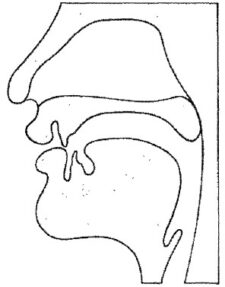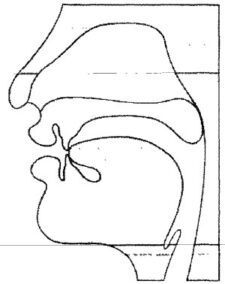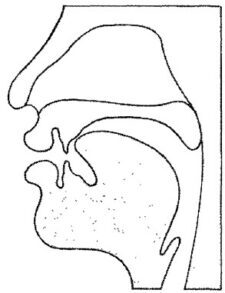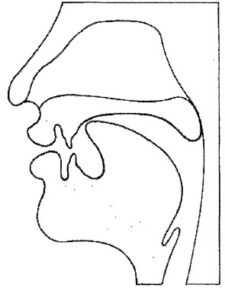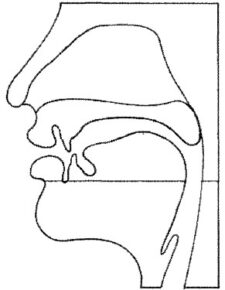Fricatives
Fricatives occur when two vocal organs come close enough together for the
movement of air to be heard between them.
Unvoiced sounds like / f / are shown on a grey background.
Voiced sounds like / v / are shown on a white background.
Characteristics
Labio-dental sounds. The lower lip makes light contact with the upper teeth. The soft palate is raised. / f / is unvoiced and fortis. / v / is voiced and lenis and is devoiced at the end of a word.
Examples:
/ f / fan, hoof, caffe, phase
/ v / van, hooves, cover, above
Characteristics
Dental sounds. The tongue tip makes light contact with the back of the top, front teeth. Or, tongue tip may protrude between upper and lower teeth. The soft palate is raised. / θ / is unvoiced and fortis. / ð / is voiced and lenis and is devoiced at the end of a word.
Examples:
/ θ / think, bath, mathematics
/ ð / the, bathe, father
Characteristics
Alveolar sounds. The tongue blade makes light contact with the alveolar ridge. The soft palate is raised. / s / is unvoiced and fortis. / z / is voiced and lenis and is devoiced at the end of a word.
Examples:
/ s / sue, this, icy,
/ z / zoo, these, lazy,
Characteristics
Palato-alveolar sounds. The tongue blade makes light contact with the alveolar ridge, and the front of the tongue is raised. The soft palate is also raised. / ʃ / is unvoiced and fortis. / ʒ / is voiced and lenis and is devoiced at the end of a word. / ʒ / does not occur as an initial sound in English and is rare as a final sound.
Examples:
/ ʃ / she, fish, nation
/ ʒ / beige, measure
Characteristics
A glottal sound. Air passes from the lungs through the open glottis, causing audible friction. Tongue and lip position is that of the following vowel sound. The soft palate is raised. / h / is unvoiced and does not occur as a final sound.
Examples:
/ h / hello, behind
